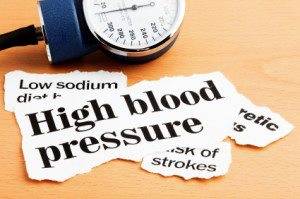Taking Control of Your Blood Pressure
TEXARKANA, Ark. –
The month of February is about more than hearts on Valentine’s Day. It’s also Heart Month, a time when we should think about our heart health and the heart health of those we love. Heart health has many contributing factors, but the good news is many of those are within your control.
High blood pressure, sometimes called hypertension, is when the force of blood pushing against the walls of the arteries as the heart pumps blood is too high. It is the leading cause of heart disease and stroke. There are more than 3 million US cases per year. In fact one in every six Americans has high blood pressure and for certain groups the rate is even higher. It can be chronic and can last for years or be lifelong.
According to the Centers for Disease Control (CDC) people with high blood pressure are 4 times more likely to die from a stroke and 3 times more likely to die from heart disease compared to those with normal blood pressure.
Keeping your blood pressure in the healthy range is good for your heart. It reduces the risk of the walls of your blood vessels walls becoming overstretched and injured, and having a heart attack or stroke; and of developing heart failure, kidney failure and peripheral vascular disease.
So what can you do to take charge of your health and your blood pressure? First, you can ask your doctor what your blood pressure should be and check it every few months. If you already have been diagnosed with high blood pressure then you may want to invest in a blood pressure cuff for home and monitor it yourself, keeping a record of what it is each time you check it.
Normal blood pressure for adults is a systolic pressure below 120 mmHg and a diastolic pressure below 80 mmHg (120/80). If checking yours regularly, you may notice that it changes when you sleep, wake up, are excited or nervous, or are active.
If you are a smoker, quitting can help with high blood pressure. If you don’t smoke, don’t start.
The 2015-2020 Dietary Guidelines for Americans recommends limiting the intake of sodium to less than 2,300 mg per day for those 14 and older. One way to stay in this recommended range is to cook more at home and eat away from home less. This allows you to control the amount of sodium added to your food. In fact, according to the CDC, 75% of the sodium we consume comes from processed and restaurant foods, not the salt shaker.
When buying vegetables, choose fresh, frozen-not in a sauce, or no salt added canned vegetables. With no salt added canned vegetables, it’s a good idea to rinse any small amount of salt that might be on the canned vegetable and cook them in water instead of the juice from the can.
Choose low sodium or no sodium whenever there is a choice. Especially being considerate of readymade dishes, soups, sauces, and pre-packaged items such as dry pasta mixes, or seasoning packets.
Use in moderation luncheon meats, or processed foods. These types of foods are generally high in both fat and sodium. It’s easy to spot processed foods at the grocery store; anything with a Nutrition Facts label on the package has been processed.
To reduce sodium in home cooking, season foods with fresh herbs and spices instead of salt. This recipe for No-Salt Seasoning is easy to make and more economical than the salt free substitute you might buy at the grocery store.
For more information contact me at the University of Arkansas, Division of AG, Cooperative Extension Service, in Miller County at 870-779-3609, e-mail chadley@uada.edu. Follow me on facebook at UAEXMillerCountyFCS/CarlaHaleyHadley, and twitter at @MillerCountyFCS for additional recipes and tips.
No-Salt Seasoning
5 teaspoons onion powder
1 Tablespoon garlic powder
1 Tablespoon paprika
1 Tablespoon dry mustard
1 teaspoon dried thyme
1/2 teaspoon pepper
1/2 teaspoon celery seed
Combine all ingredients in a small jar with a shaker top. Use for seasoning broiled fish, poultry, cooked vegetables, soup and stews, or place it on the table to be used individually. Yield: 1/3 cup.
By Carla Haley-Hadley
County Extension Agent - FCS
The Cooperative Extension Service
U of A System Division of Agriculture
Media Contact: Carla Haley-Hadley
County Extension Agent - FCS
U of A Division of Agriculture
Cooperative Extension Service
400 Laurel Street, Suite 215 Texarkana AR 71854
(870) 779-3609
chaley@uada.edu
Related Links
The Arkansas Cooperative Extension Service is an equal opportunity institution. If
you require a reasonable accommodation to participate or need materials in another
format, please contact your County Extension office (or other appropriate office)
as soon as possible. Dial 711 for Arkansas Relay.
Pursuant to 7 CFR § 15.3, the University of Arkansas System Division of Agriculture
offers all its Extension and Research programs and services (including employment)
without regard to race, color, sex, national origin, religion, age, disability, marital
or veteran status, genetic information, sexual preference, pregnancy or any other
legally protected status, and is an equal opportunity institution.
